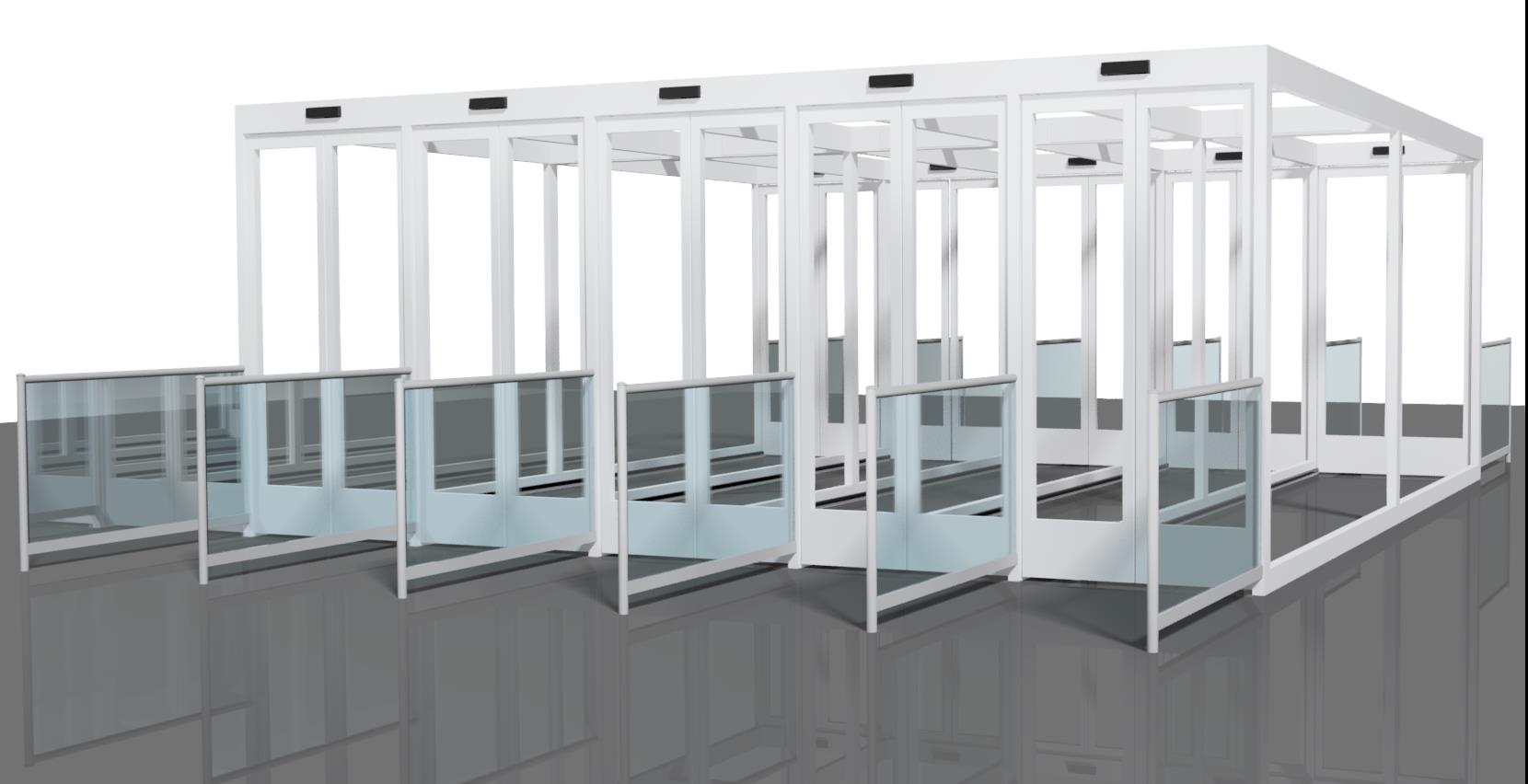 Securing and monitoring a facility’s exits are just as important to overall security as its entrances; hence the need for Exit Lane Breach Control security (ELBC). ELBC is a security measure that either detects or prevents unauthorized entrance into a building via “Exit Only” parts of a building. ELBC systems are automated doors exits that are programmed via software algorithms to open when approached for exiting foot traffic or to open as part of an interlocking sequence to prevent a security breach.
Securing and monitoring a facility’s exits are just as important to overall security as its entrances; hence the need for Exit Lane Breach Control security (ELBC). ELBC is a security measure that either detects or prevents unauthorized entrance into a building via “Exit Only” parts of a building. ELBC systems are automated doors exits that are programmed via software algorithms to open when approached for exiting foot traffic or to open as part of an interlocking sequence to prevent a security breach.
Automated ELBC enforcement is 100% objective, with predetermined scenarios of operation. The breach control functionality can also be incorporated into multi-lane entrances that have dedicated “exit only” lanes.
ELBC security can be implemented for buildings that require access control security for exit areas with immediate public access. One good example an ELBC requirement is at airports, which are required to monitor exits where passengers walk from the high security “flight side” to the low security “public side”. In some airports ELBC security needs to perform 24/7, making it a more economical security solution than posting security personnel.
Courthouses with unmanned exits also rely on ELBC security exits, where the risk of smuggling contraband or weapons into the penal system is high.
ELBC systems can operate to accommodate different levels of security as required by the facility. Depending on the needs of the facility, an ELBC system can provide either detection or prevention.
An ELBC system operating as a detection system is one whereby alarms are sounded and doors begin to close when a potential breach is attempted. The utility for ELBC as a detection system will most likely be in areas that require rapid throughput for high traffic locations. The need to satisfy high throughput will require an ELBC system to operate in a “screen & flow” capacity.
Preventing an exit lane breach requires an exit with interlocking doors, whereby only one door is open at a time. Properly programmed interlocking doors will detect and prevent unauthorized entrance. The trade-off to this approach is lower rate of throughput. This application may not be suitable for areas like airports, factories or shopping malls that require high throughput.
There are a number of technologies that can increase the security of ELBC systems. Left Objects Detection, Thrown Objects Detection and Directional Sensors are typical for “screen & flow” ELBC systems. These sensors may use infrared beams and/or video analytics to assure detection of objects left or thrown in or through an ELBC system.
ELBC systems with interlocking doors use the same technologies as a screen & flow system with the exception of Thrown Objects Detection. The interlocking door functionality prevents objects from being thrown through the exit area.
To satisfy as wide a spectrum as possible, ELBC systems can be integrated into legacy security systems or operate as a standalone system with its own command & control protocols and capabilities. In either instance, security personnel have “eyes on” as well as communication capability if desired.
The future of securing exits is here and operating. Configuring and programming your exits to meet your security requisites will provide greater safety and reduce your security costs.

